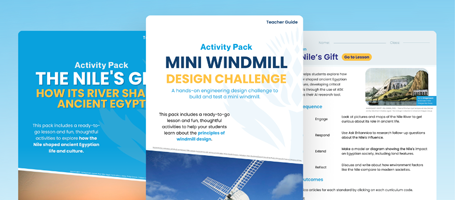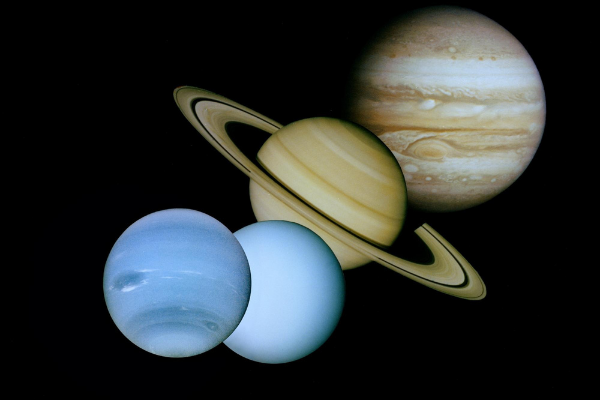How does the Earth orbit? Comparatively, how far is each planet from the Sun? Can you make a model of the Solar System and eat it too?
Help your primary and secondary students probe the mysteries of our Solar System with these inquiry-based learning activities. Contact your library staff to see if your institution already has access to Britannica LaunchPacks or claim your free trial here.
Our Solar System: What else is out there?
This classroom activity is designed for Upper Primary – Secondary students.
Supporting LaunchPack: The Solar System
Objective
Students will be able to describe and explain one or more celestial bodies (other than planets) within our Solar System.
Materials/Group
- Computers with internet access.
Lesson Directions
- There are many other celestial bodies within our solar system that are just as important. Ask students if they know what any of these are. Record their ideas.
- Individually, or in small groups, students select one body to research. This could be stars, comets, asteroids or meteoroids. Guiding research questions can be provided:
- What object have you chosen?
- How is this object defined (i.e. what is it)?
- Where can you find these objects in our Solar System?
- How is the object formed?
- What do they look like?
- What elements or substances are they composed of?
- What do they do or how do they move?
- What is special or interesting about your chosen body?
Lesson Notes
The information gathered should be presented in a creative way, for example:
- Making the body (e.g. from papier mache)
- Adding the researched information and hanging it from the classroom ceiling to create a Solar System
- Writing a story from the perspective of the chosen body
- Writing a persuasive text convincing the reader that the chosen body is an integral part of the Solar System
- Creating a short video demonstrating how the chosen body moves or travels
- Building a model of the Solar System, focusing on the location and function of the chosen body or writing
- Presenting and recording a fictional news report about the chosen body.
Our solar system is fantastically bizarre. There are worlds with features we never imagined. Storms larger than planets, moons with under-surface oceans, lakes of methane, worldlets that swap places…and that’s just at Saturn.
Creating a Relative Distance Clothesline Model
This Classroom activity is designed for Low – Middle Primary students.
Supporting LaunchPack: Planets
Supporting LaunchPack: Space
Objective
Make a model of the solar system to identify planets by size, shape, colour, features, and position in the solar system.
Materials/Group
- Yellow construction paper
- Piece of clothesline, 3m long
- Eight 2.5cm by 15cm strips of cardboard
- 9 pegs
Set Up
- Put up clothesline across blackboard or bulletin board, low enough for children to reach it. (Use magnets or clips to hold in place)
- Create a sun with 15cm diameter on yellow paper. Label and cut out.
- Write names of planets on cardboard strips.
Lesson Directions
- Discuss with the class what solar means and where the sun will be positioned on the model.
- In small group’s students put sun on one end of clothesline. Discuss that the sun is a star.
- In their groupings students use strips of paper to place their planets on the clothesline in their relative distance from the sun. Discuss the inner and outer planets and asteroid belt. Planets should be the following distances from the sun (approximately):
- Mercury: 2cm
- Venus: 4cm
- Earth: 5cm
- Mars: 7cm
- Jupiter: 30cm
- Saturn: 50cm
- Uranus: 1m
- Neptune: 1.5m
Lesson Extensions
Create a solar system made from foods.
- Sun – Giant pumpkin or giant orange garbage bag stuffed with newspaper.
- Mercury – Coffee bean
- Venus – Large blueberry
- Earth – Cherry
- Mars – Pea
- Jupiter – Large grapefruit or cantaloupe
- Saturn – Very large orange
- Uranus – Kiwi
- Neptune – Apricot or nectarine
Get full access to over 1700 STEM-aligned, ready-to-use learning packs with a subscription to Britannica LaunchPacks. Browse the full collection or get started free.

